Fromage is a medium-light euro game about cheese making, featuring unique mechanics and quick gameplay. The main board is divided into four quadrants, and everyone plays in their own quadrant simultaneously. After that, the board is rotated, and the next turn begins in the next quadrant. These quadrants represent four different mini games, each playing and scoring in a unique way.
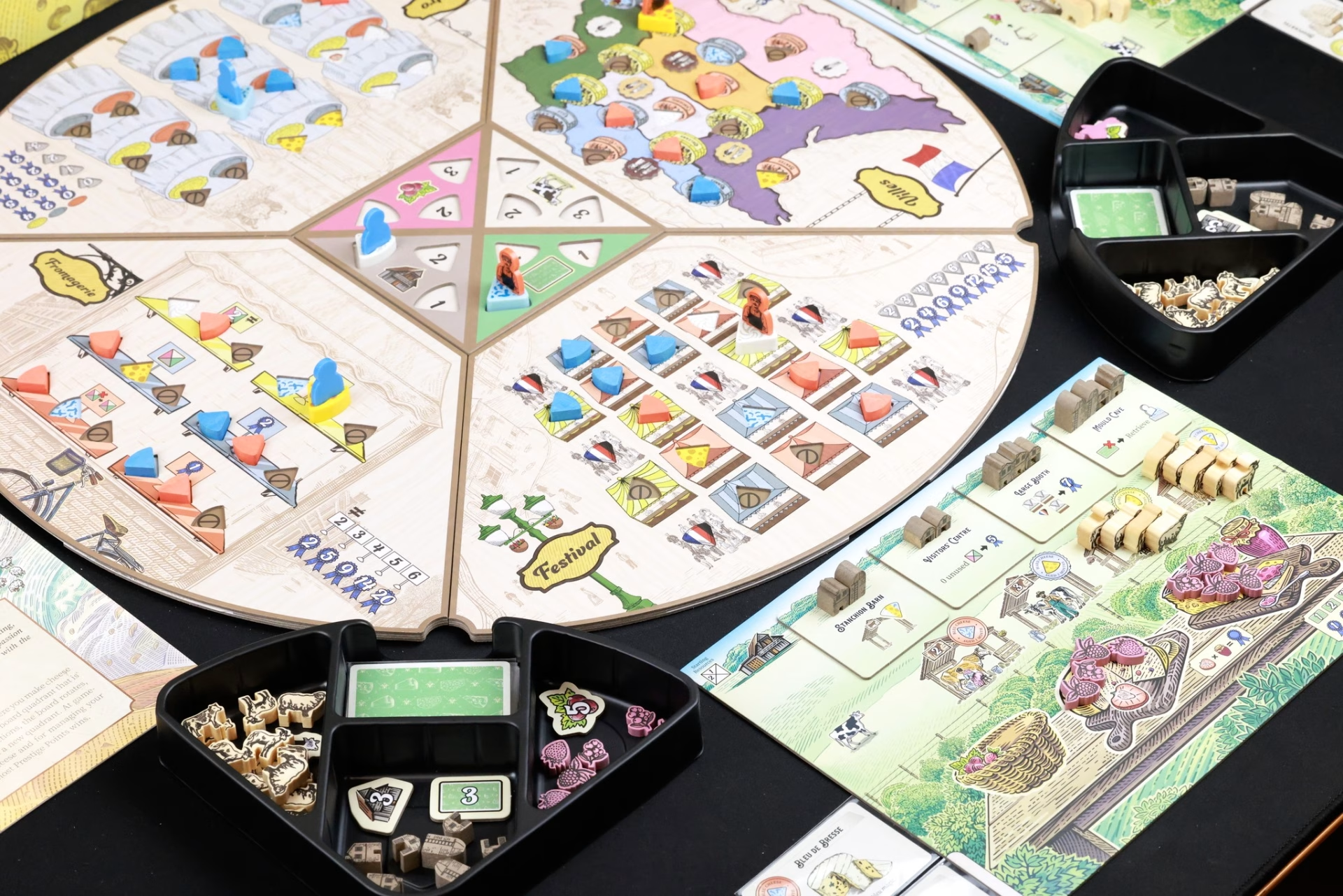
Gameplay
Every player starts the game in their own quadrant. They also receive their starting resources from the quadrants furthest away from them. Each quadrant is divided into two sections: one provides one of the four resources in the game, and the other is used for cheese making. You are allowed to place up to one of your three workers in each section.
Each player has three workers, each capable of producing one of the three cheese types. How these workers function is the core of the game. Besides the cheese type, you also choose the age of the cheese you produce: bronze, silver, or gold. Bronze cheese gave the weakest benefits but returns your worker in the following round. Gold cheese provided the strongest benefits, but you won’t get your worker back for three turns. The same rule applies to resources; the more resources you gain, the later your workers return. So, the game is all about planning your moves ahead of time and making sure your workers are available when you need them, or sometimes sacrificing future actions to secure a vital spot in your quadrant. This element of the game is incredibly fun.
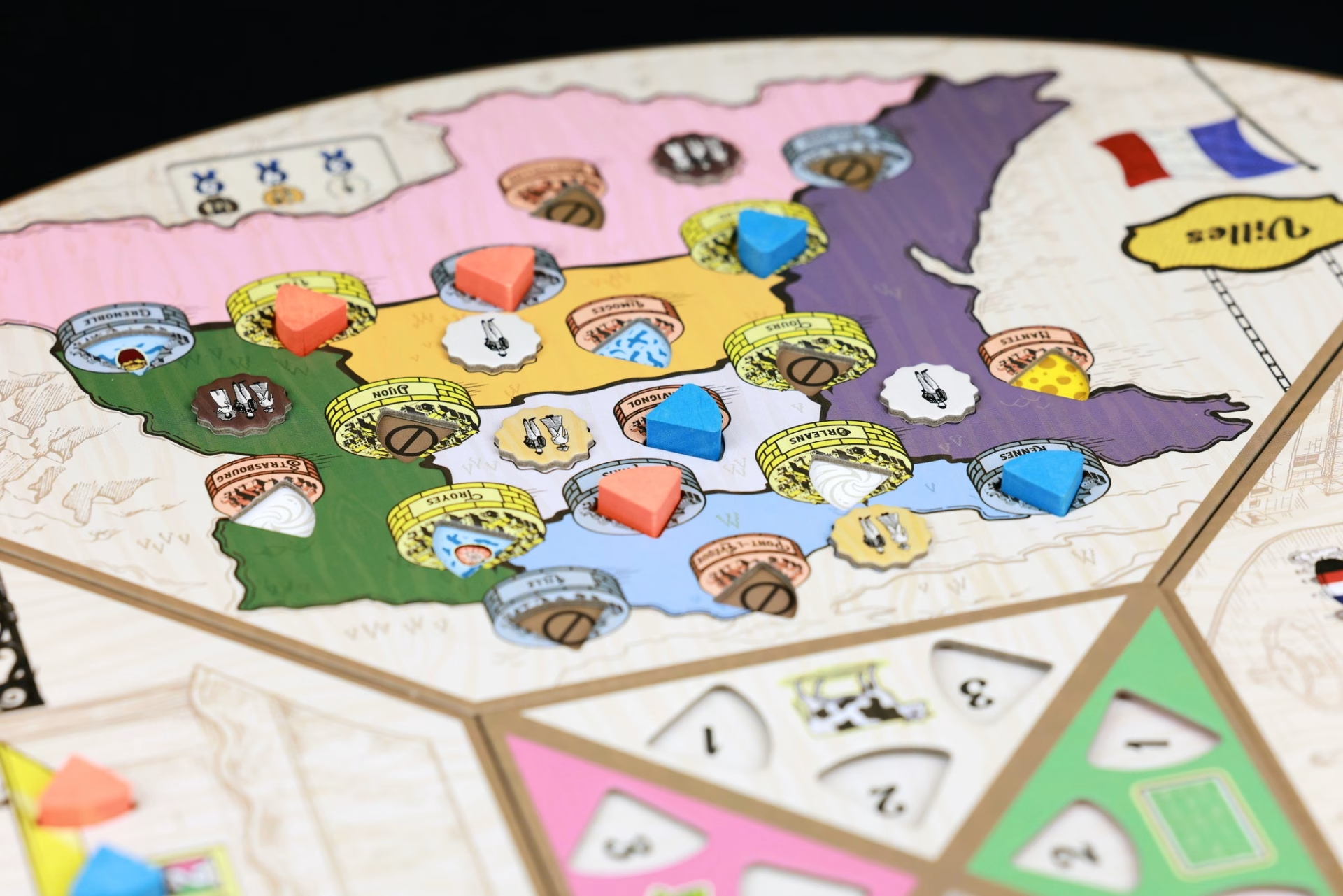
Player boards have asymmetric powers, and structure tokens that can be gained as a resource allow you to unlock them. These powers can be changed from game to game by including the Structures Module and drafting building tiles. Structures provide various benefits, including extra action spaces, victory points, or resources when taking certain actions. Some of them include rule-breaking changes, such as retrieving your workers early or modifying standard actions in creative ways.
This game scales perfectly, and the component design is a major reason why. Depending on the player count, you slide a sheet into each quadrant of the main board. These sheets determine which locations are available and how everything scores. Essentially, the board is constructed for each specific player count, so you don’t need to worry about scoring adjustments or blocking off spaces; everything is already built into the design. This is an excellent use of multi-layered boards and modern board game components.
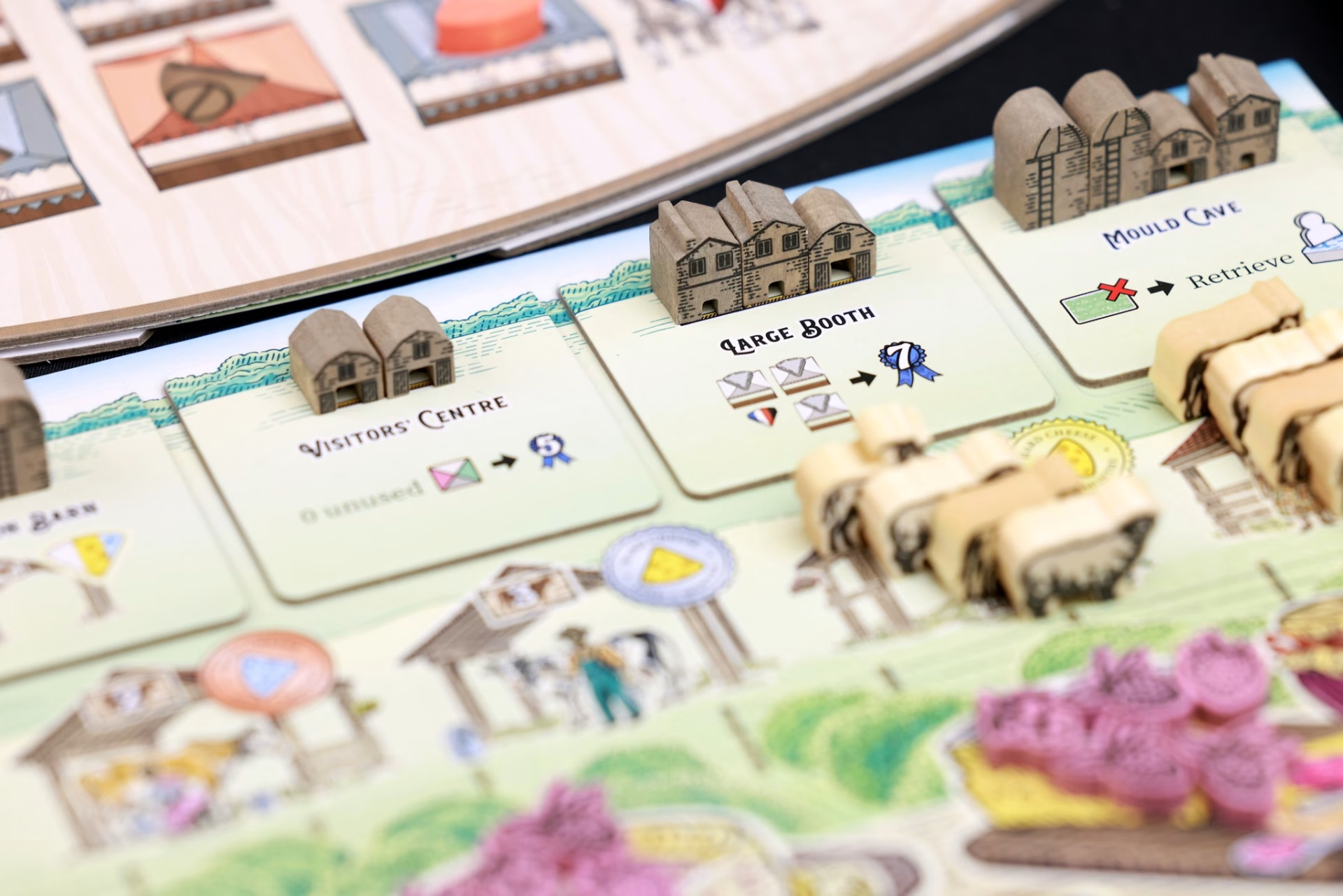
The rules of the game are simple and easy to follow. Most of the complexity lies in learning how each quadrant scores and planning ahead during play, making Fromage a light to medium-weight game.
The Solo Game
In the solo mode, you reveal a card each turn and place a cheese token for your opponent before taking your own turn. Essentially, the solo opponent gets in your way, simulating a two-player game where the other player places a cheese token before each quadrant comes back to you.
While the game is more engaging at higher player counts, the solo experience is quite fun and rewarding. You will probably spend more time planning your moves in the solo game, as the solo opponent occupies a single cheese spot at random in each quadrant before you can make your next move, allowing for more freedom in long-term planning.
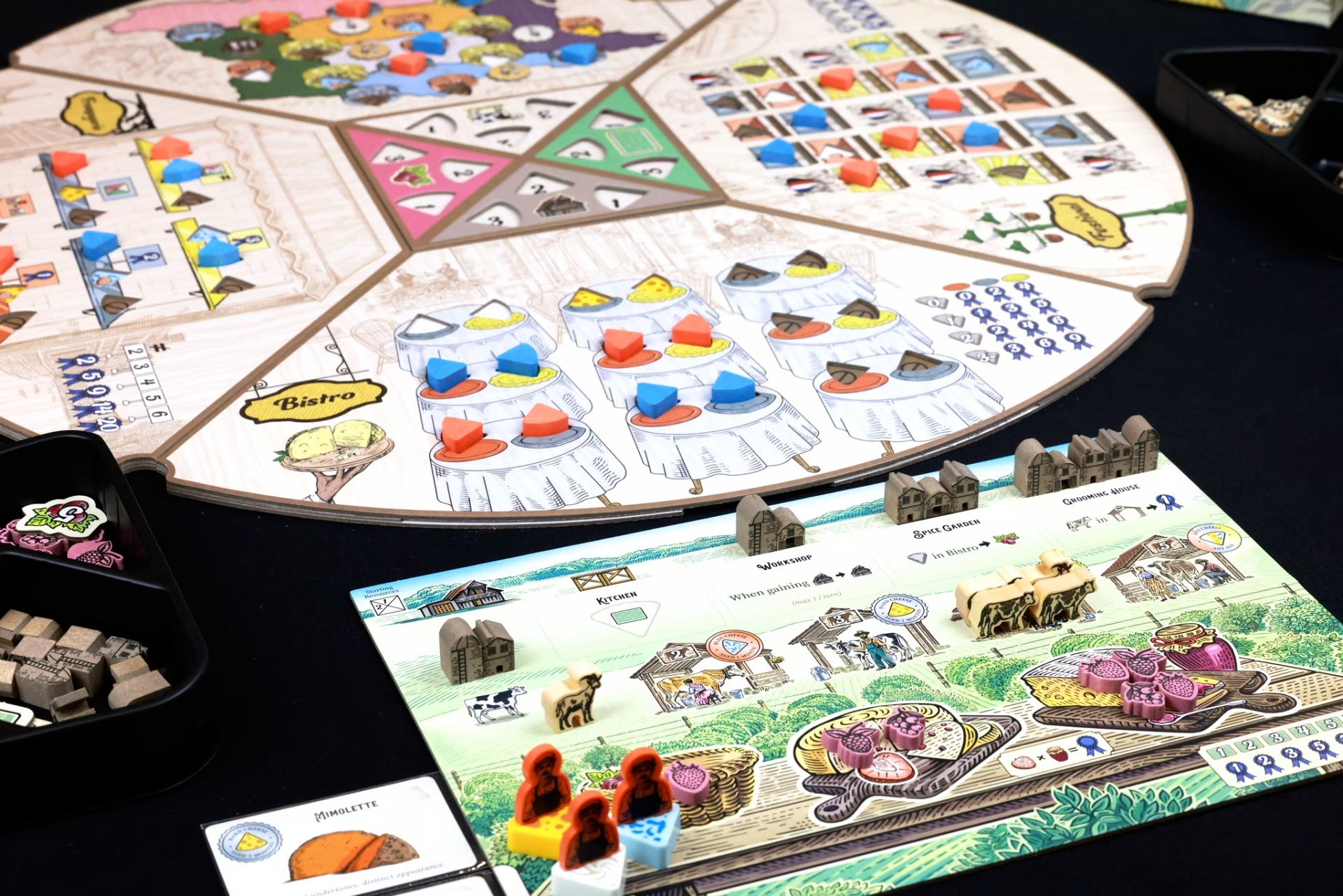
Components
The components are one of the best aspects of this game. As mentioned earlier, the way the quadrants are constructed is an excellent approach to player scaling. It might sound like a gimmick at first, but it adds to the player experience.
All other components are made of high-quality cardboard, and the artwork is beautiful. Please also note that the resource pieces shown in the photos are from the limited edition. The retail edition of the game comes with cardboard pieces instead.
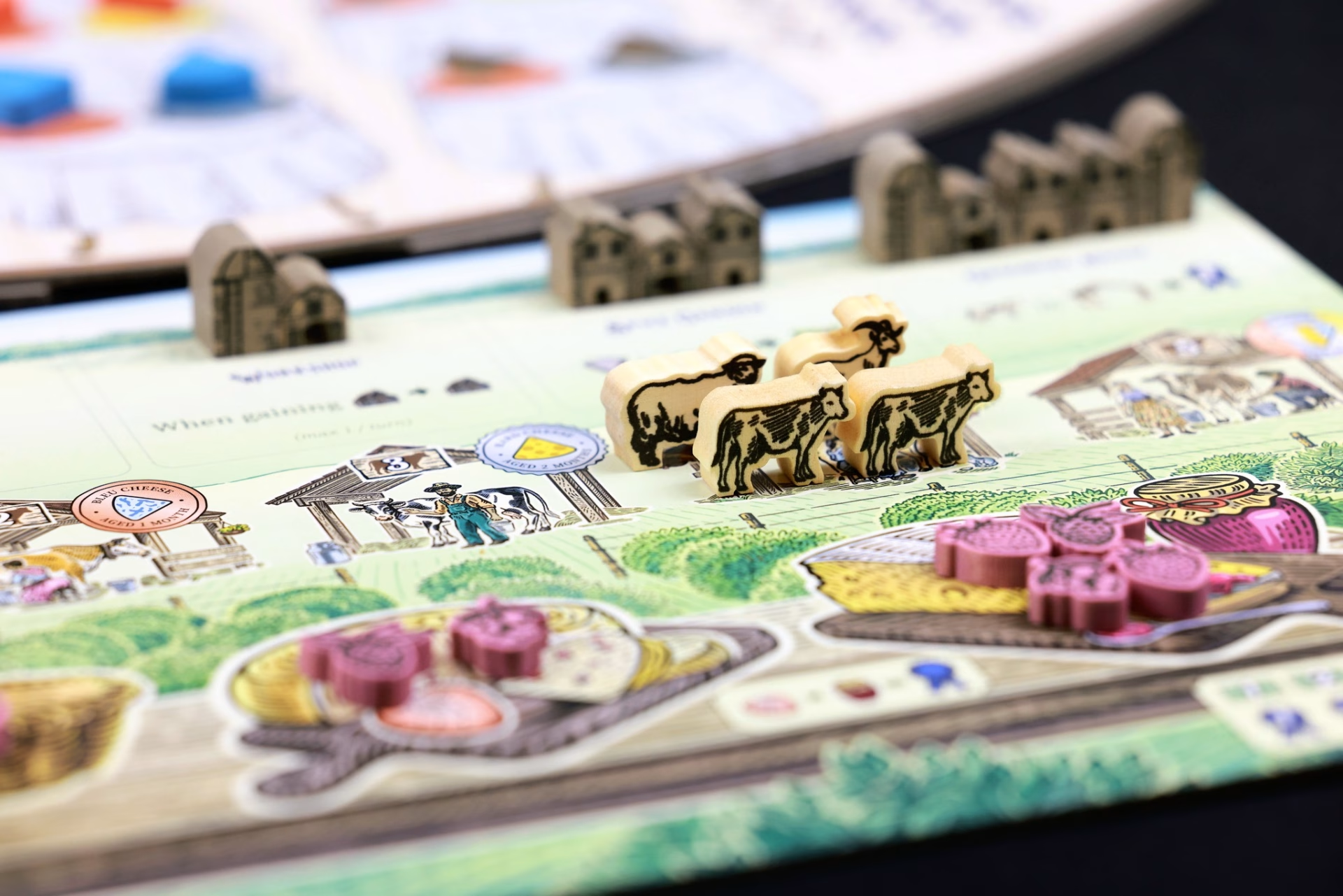
Final Thoughts
Fromage is a great euro game. It’s engaging, plays quickly, and features unique mechanics and components. It is possible that it can get repetitive after a while if you play it constantly, but considering its weight, playtime, and straightforward rules, it can hit the table from time to time as a great option for lighter gaming sessions.
Disclosure: We received a review copy of this game. Also, there may be an affiliate link in the links included at the end of this article.
Discover more from BoardGameShots
Subscribe to get the latest posts sent to your email.



